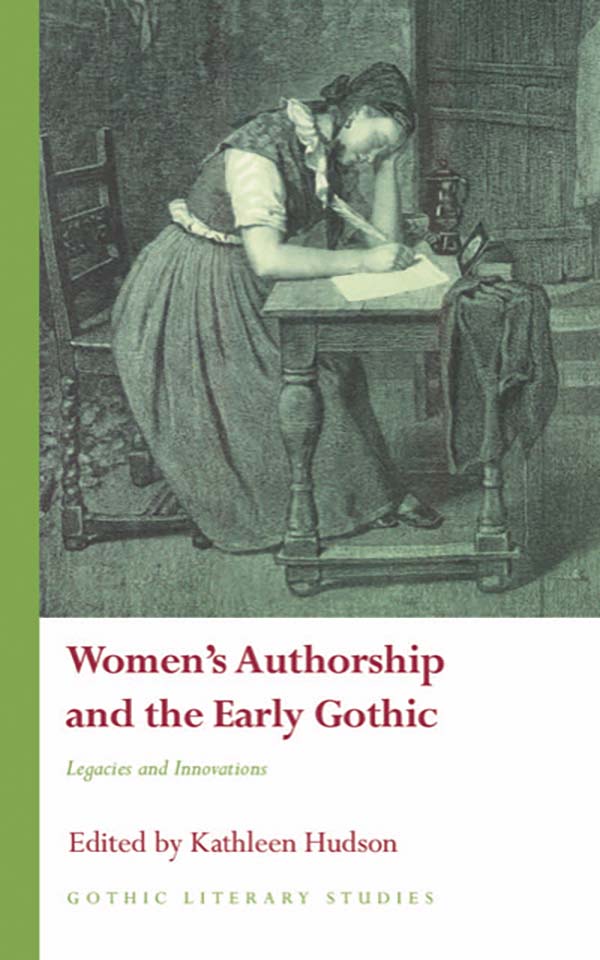Women's Authorship and the Early Gothic
Legacies and Innovations
Editor(s) Kathleen Hudson
Language: English
Genre(s): Literary Criticism
Series: Gothic Literary Studies
- August 2020 · 288 pages ·216x138mm
- · Hardback - 9781786836106
- · eBook - pdf - 9781786836113
- · eBook - epub - 9781786836120
This edited collection examines Gothic works written by women authors in the late eighteenth and early nineteenth centuries, with a specific focus on the novels and chapbooks produced by less widely commercially and critically popular writers. Bringing these authors to the forefront of contemporary critical examinations of the Gothic, chapters in this collection examine how these works impacted the development of ‘women’s writing’ and Gothic writing during this time. Offering readers an original look at the literary landscape of the period and the roles of the creative women who defined it, the collection argues that such works reflected a female-centred literary subculture defined by creative exchange and innovation, one that still shapes perceptions of the Gothic mode today. This collection, then, presents an alternative understanding of the legacy of women Gothic authors, anchoring this understanding in complex historical and social contexts and providing a new world of Gothic literature for readers to explore.
Acknowledgements
List of Illustrations
List of Contributors
Introduction
Alternative Genealogies: (Re)tracing the Origins of Women’s Gothic in Sophia Lee’s The Recess and Mrs. Carver’s The Horrors of Oakendale Abbey - Anna Shajirat
Gothic before Gothic: Minerva Press Reviews, Gender and the Evolution of Genre - Hannah Doherty Hudson
What ‘Poor Mrs. Kelly’ Saw: Isabella Kelly Reads The Monk - Yael Shapira
Mary Robinson’s Gothic and the Prison of Gender - Deborah Russell
Adopting the ‘Orphan’: Literary Exchange and Appropriation in Eleanor Sleath’s The Orphan of the Rhine - Kathleen Hudson
The Fiction of Mary Julia Young: Female Trade Gothic and Romantic Genre-Mixing - Nicky Lloyd
Sarah Wilkinson and J. F. Hughes: A Literary Relationship - Franz Potter
Negotiating Gothic Nationalisms in Ann Radcliffe’s Post-1797 Texts: Gaston de Blondeville and St. Alban’s Abbey - Elizabeth Bobbit
Regina Maria Roche’s The Children of the Abbey: Its Literary Life and Afterlife - Christina Morin
Self-haunted Heroines: Remapping the generic “I” back into Romantic subjectivities - Elizabeth Neiman
Bibliography
Author(s): Kathleen Hudson
Kathleen Hudson is an Adjunct Professor of English Literature at Anne Arundel Community College and the United States Naval Academy, and is the author of Servants and the Gothic, 1764–1831: A half-told tale (2019).

